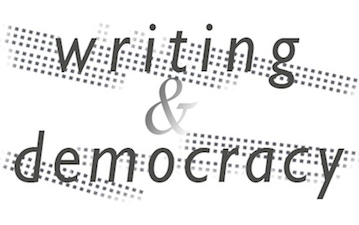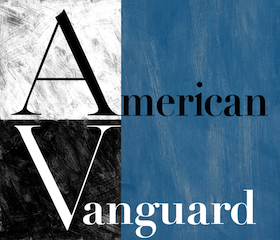Reflection: Tom Healy
ASHLAB: The Ashberyian Panorama
Tom Healy
One thing we do at AshLab—an ongoing documentary project on the life and work of poet John Ashbery—is make panoramas of Ashbery’s home in Hudson, NY. We can’t get inside Ashbery’s head, but we can put a freeze frame on the Ashberyian domestic interior circa 2013.
We are using sophisticated digital cameras, but of course anyone with an iPhone can shoot a pretty cool panorama. What I love is that this now-ubiquitous tool of our culture’s relentless self-documentation has a weird and interesting history that dates back to sideshows in the 19th century.
Joseph Puchberger, a name I think Ashbery would love, first patented the panoramic camera in Austria in 1843. By the 1870s, huge crowds were gathering to see panoramas set up in specially-built cyclorama firetraps in major cities, with photographs and huge painted murals stitched in the round to document both fact and fantasy. My favorite has to be a panorama of John Bunyan’s allegorical narrative, Pilgrim’s Progress. It was 8-ft tall and a mere 900 ft long. Somehow it found its way to the small town of Saco, Maine.
The panorama is a perfect Ashberyian trope. Ashbery’s (in)famous flow of language seems to document life in a wide angle, capturing a landscape (a room, a train of thought) in a continuous, gorgeous set of sequences. Reading Ashbery can be like getting lost, spinning yourself slowly around a hall of large, vertiginous, ever-moving mental images, memories, distractions, and perfect snapshots of the boredom, distraction, and urgencies of contemporary life.
And the rollercoaster history of panoramas—from carnival to antique, from social media to academic documentary practice—is itself a kind of Ashberyian poetics, which frequently maps the arc of curios, trace histories, an archeology of the popular and the offbeat.
Teaching AshLab can be a bit vertiginous as well. Semester to semester, professors Robert Polito, Irwin Chen, Adam Fitzgerald, and I work with our extraordinary TA Brooke Ellsworth to stitch together a panorama of guests and brilliant students from across The New School and its different programs, always circling Ashbery’s home and its extraordinary collection of art and objects and then overlapping that circle with circles of close reading; doubling back to Ashbery’s poems and essays again and again to see what we’ve missed, what seems different on every new reading.
And the best part is that AshLab isn’t just a seminar. We are making it into a virtual site where multiple intellectual practices—the documentary, the archival, the biographical, the critical, the aesthetic—will meet for anyone to come to see and add to what we have seen in the life of one of greatest poets of our time.
As with the best classes, AshLab constantly revises the way I think about poetry, about teaching. One of my neuroses is to like to see things done, crossed off the list. But with Ashbery and our approach to him, every subject is always getting undone just as we finish it; every encounter does and undoes what I thought I knew about him, what I thought I understood about his poetry and artistic practice.
Ashbery once described this play of doing and undoing with piercing clarity in his poem “And Ut Pictura Poesis Is Her Name.” He describes the discovery of oneself in the seesaw exchange with others—friends, classmates, professors—as
Something between breaths, if only for the sake
Of others and their desire to understand you and desert you
For other centers of communication, so that understanding
May begin, and in doing so be undone.
The beginning of understanding that leads to its being undone seems so paradoxical; but anyone who’s spent any time in a classroom (so, all of us) knows this describes precisely what is so generative about learning. We “desert” each other in one context only to find one another again in a different context, new insights. The gregarious and joyfully unstable movement between multiple and solitary perspectives is where real thinking can be found.
Perhaps, like an Ashbery poem, this sounds a bit dense, but there’s definitely a lightness to it too. I think that great trickster artist Duchamp was trying to express something similar to being “between breaths” when he talked about infrathin—experience that seems undetectable but in fact motivates and shapes our AshLab engagement and understanding of everything else around it.
To employ another recurring Ashberyian idea, AshLab—like all learning, like life—is a voyage: unplanned and yet urgent, somehow undertaken in that impossible and infinite space between breaths. I think all of us in AshLab have experienced a powerful sense of friendly voyaging, both through our own creative lives and Ashbery’s. We get to go everywhere and nowhere. It’s an incredibly heady experience.
Adam Fitzgerald—one of the AshLab professorial gang—has just published a brilliant first book of poems, The Late Parade (Yes, Ashbery gave it a beautiful blurb of praise), and I think Adam describes this exploratory feeling wonderfully in his poem “Two Worlds at Once”: “I’ve tried, all the same, during the wiles I’ve dealt with, / been dealt, in dragoon fashion, to serve up a modicum / of hearing what ringing noise is left behind each object. . . .”
Panoramas of voyages ringing with the gorgeous noise of Ashbery’s work and our own: that’s what we’ve been discovering and documenting in AshLab.
Tom Healy is a writer, poet, and chairman of the Fulbright Foreign Scholarship Board, which oversees the Fulbright program worldwide. He was appointed to the Fulbright Board by President Barack Obama. Tom’s first book, What the Right Hand Knows, was a finalist for the 2009 L.A. Times Book Prize and the Lambda Literary Award and his poems and essays have appeared in many literary journals and anthologies. His chapbook, Animal Spirits, was published by Monk Books in 2013. Earlier, Tom served on President Clinton’s Presidential Advisory Council on HIV/AIDS and worked around the world on AIDS and poverty programs. Tom owned one of the first contemporary art galleries in Chelsea and later served as president of the Lower Manhattan Cultural Council. In 2006, he was awarded the New York City Arts Award by Mayor Michael Bloomberg for leading rebuilding efforts for the downtown arts community after 9/11. His website is www.tomhealy.net.



